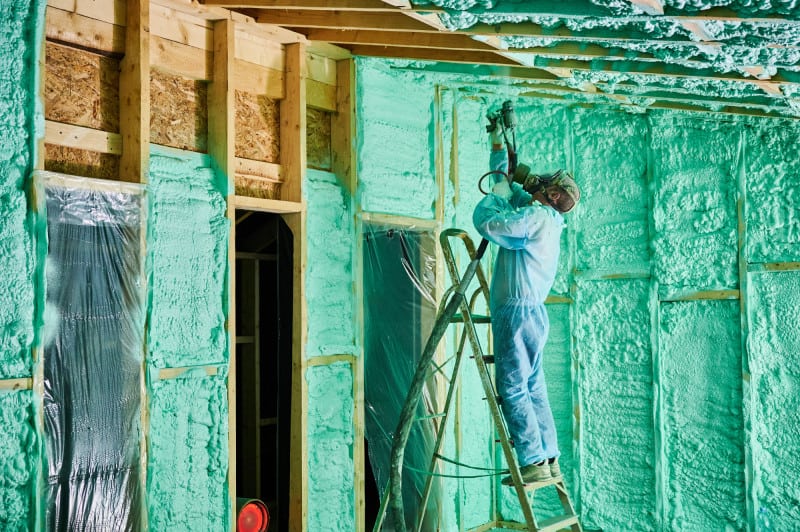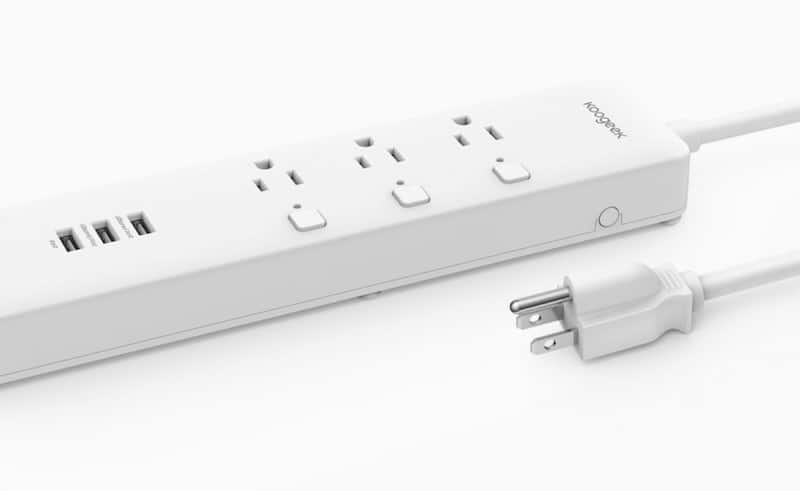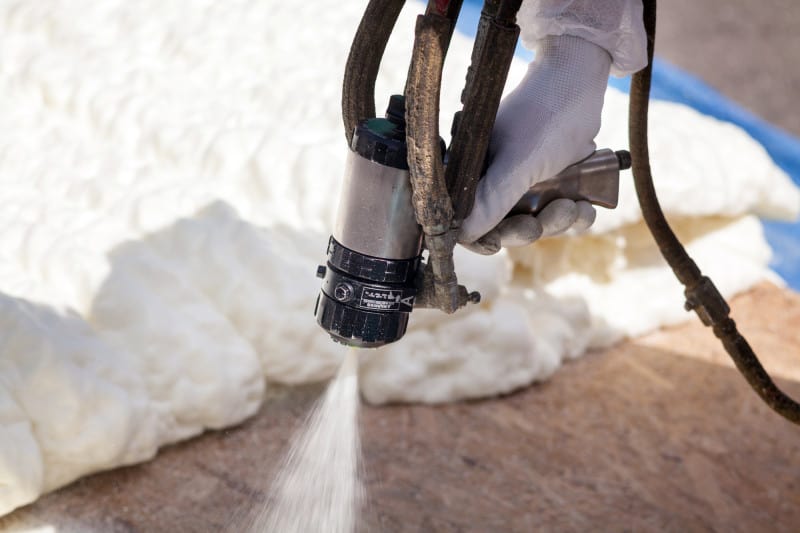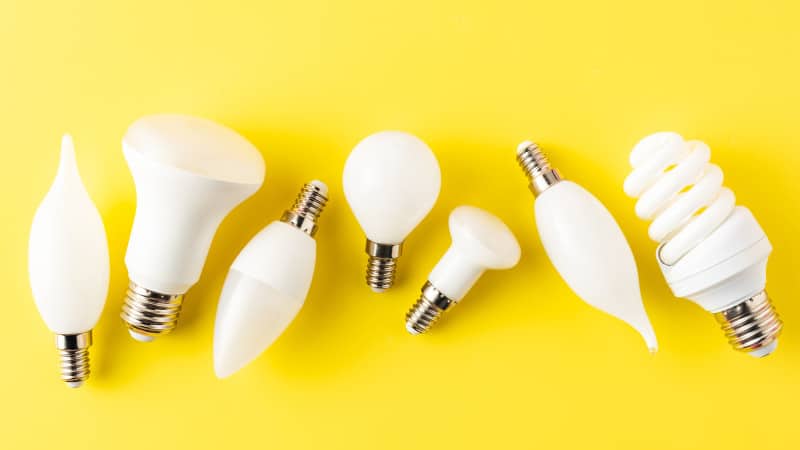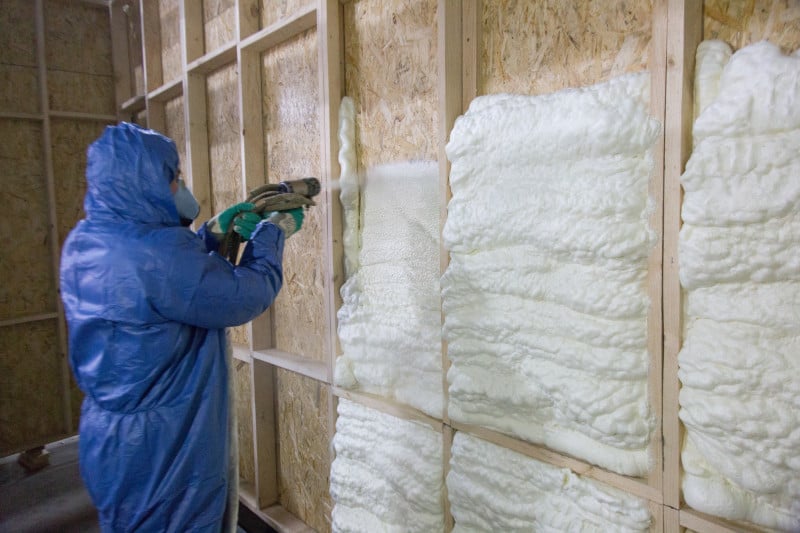As the seasons change and the temperature drops, you may find yourself reaching for the thermostat more often than usual.
But did you know that the key to keeping your home warm and cozy could be as simple as insulating it with spray foam?
Not only does it help regulate temperature, but it can also save you money on energy bills in the long run.
Don’t worry if you’re not a construction expert – insulating your home with spray foam is a DIY project that anyone can tackle with the right tools and knowledge.
I’m going to walk you through the basics of spray foam insulation, from choosing the right kit to avoiding common mistakes.
By the end, you’ll be equipped with all the information you need to keep your home warm and snug all winter long.
So roll up your sleeves and let’s get started!
The Basics of Spray Foam Insulation
If you’re looking for a cost-effective and energy-efficient way to insulate your home, understanding the basics of spray foam insulation is essential.
Spray foam insulation is a type of insulation that comes in two forms: open-cell and closed-cell.
Open-cell foam is less dense and allows for more air movement, while closed-cell foam is denser and more rigid. Both types of foam are effective at sealing gaps and preventing air leaks.
One of the major benefits of using spray foam insulation is its energy-saving potential.
By preventing air leaks, spray foam insulation can significantly reduce heating and cooling costs.
In fact, studies have shown that a properly insulated home can save up to 50% on energy costs.
When it comes to cost comparison, spray foam insulation is more expensive than traditional insulation materials like fiberglass and cellulose.
However, it’s important to consider the long-term benefits and potential energy savings when making a decision.
In terms of environmental impact, spray foam insulation is considered to be a more eco-friendly option as it can reduce energy consumption and greenhouse gas emissions.
Maintenance tips for spray foam insulation include regular inspections for any signs of damage or wear and tear, as well as cleaning any debris or dust that may accumulate on the surface.
Choosing the Right Spray Foam Insulation Kit
When selecting the perfect kit, you’ll want to consider several factors to ensure that your home insulation project is a success.
To start with you’ll need to determine the size of the area in need of insulation.
This will help you to estimate the amount of foam required for the job, and ensure that you purchase a kit that provides adequate coverage.
Next, you’ll need to consider the type of foam you require.
There are two main types of spray foam insulation: open-cell and closed-cell.
Open-cell foam is more affordable and provides excellent soundproofing, but isn’t as effective at blocking air and moisture as closed-cell foam.
Closed-cell foam is more expensive, but provides superior insulation and moisture resistance, making it a good choice for areas that are prone to flooding or high humidity.
It’s important to take safety precautions when working with spray foam insulation.
Ventilation requirements vary by product, so be sure to follow the manufacturer’s guidelines carefully.
You’ll also need to wear protective eyewear, gloves, and a respirator to avoid inhaling any potentially harmful fumes.
To ensure that your kit remains usable for future projects, store it in a cool, dry place.
Preparation Steps Before Applying Spray Foam Insulation
Before you start applying the foam, it’s crucial to properly prepare the space by removing any old insulation, cleaning the area, and protecting surrounding surfaces with painter’s tape or plastic sheeting to ensure a successful and mess-free insulation project.
Remove any old insulation or debris from the area you plan to insulate. This will allow the spray foam to adhere better to the surface and prevent any air leaks.
Next, clean the area thoroughly to remove any dust, dirt, or grease that may prevent the foam from sticking. You can use a vacuum, broom, or damp cloth to clean the area.
In addition to surface preparation, safety precautions are also essential when working with spray foam insulation.
Essential equipment includes gloves, protective eyewear, and a respirator mask to prevent any inhalation of harmful fumes.
Proper ventilation is also crucial to prevent dangerous build-up of fumes in the area.
Make sure to open windows and doors and use fans to circulate air during and after the insulation process.
Step-by-Step Guide to Applying Spray Foam Insulation
To begin applying the spray foam insulation, you’ll need to set up the equipment by attaching the hoses and nozzles to the spray gun and placing the foam tanks nearby.
Make sure to use the appropriate spray foam type for your specific project, such as open-cell foam for interior walls and closed-cell foam for exterior walls.
It’s crucial to wear proper safety equipment, including gloves, goggles, and a respirator mask, to protect yourself from any harmful chemicals.
Once the equipment is set up, it’s time to start spraying.
It’s important to use the proper application technique to ensure an even and consistent layer of foam.
Begin by spraying in a zig-zag motion, moving the gun back and forth in a sweeping motion to create an even layer.
It’s crucial to spray in thin layers, allowing each layer to dry before applying the next to prevent any drips or sags in the foam.
Aim for a thickness of 1-2 inches for optimal insulation.
After applying the foam, it’s important to clean up any excess foam or spills immediately to prevent them from drying and becoming difficult to remove.
Use a scraper or knife to remove any excess foam, and wipe down any spills with a damp cloth.
Regular maintenance, such as checking for cracks or gaps in the insulation, can prolong the lifespan of the insulation and prevent any air leaks, ultimately saving you money on energy costs.
Common Mistakes to Avoid When Applying Spray Foam Insulation
Don’t let these common mistakes ruin your spray foam insulation project!
First and foremost, it’s crucial to apply the foam evenly. Using too much foam can result in overexpansion, which can lead to gaps and air leaks.
On the other hand, using too little foam can result in inadequate insulation.
It’s important to follow the manufacturer’s instructions and use the recommended amount of foam for the area you’re insulating.
Check for air leaks after the foam has cured. This can be done by using a smoke pencil or thermal imaging camera to identify any areas where air may be escaping.
After you’re finished, be sure to clean your equipment thoroughly with soap and water to prevent the foam from hardening and clogging your equipment.
By avoiding these common mistakes and taking proper safety precautions, you can successfully insulate your home with spray foam.
Conclusion
Insulating your home with spray foam is a practical and cost-effective DIY project that can significantly improve the comfort and energy efficiency of your living space.
By properly sealing gaps and preventing air leaks, spray foam insulation helps regulate temperature and reduces heating and cooling costs.
Although it may require a higher upfront investment compared to traditional insulation materials, the long-term energy savings and environmental benefits make it a worthwhile choice.
By following the step-by-step guide, choosing the right spray foam kit, and avoiding common mistakes, you can successfully insulate your home and enjoy a warm and snug environment all winter long.
So roll up your sleeves, gather the necessary tools, and embark on this rewarding home improvement project.

